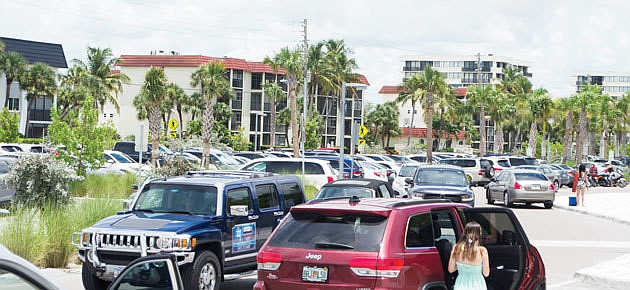- November 22, 2024
-
-
Loading

Loading

“You could pave Siesta Key, and you still wouldn’t have enough parking.”
— Mark Smith, chair, Siesta Key Chamber of Commerce
“I believe that the residents, the property owners of Sarasota County, should always have free parking at the beach.”
— Mark Smith, chair, Siesta Key Chamber of Commerce
To the first, Smith is correct.
To the second, that would be nice, but not the best way to address Siesta Key’s parking dilemmas.
Sarasota County commissioners next month are expected to address once again that persistent challenge — and one we hope never goes away: the fact Siesta Key is the best beach in the United States.
As such, our world-famous beach creates the constant dilemmas of how to manage the traffic, parking and people — and manage them in a way that our visitors want to come here again and again and again.
It’s tough being No. 1. Everyone wants a piece of you. Indeed, Siesta’s beach-parking challenges make us think of Disney World and Universal Studios and how gazillions of people flood into those parks and Orlando every day, every year.
Those parks and Siesta’s parking issues and crowds also bring to mind that famous Yogi Berra malapropism: “It’s so crowded nobody goes there anymore.” We don’t want that.
So it’s a must: To make choices that help alleviate traffic jams on and off Siesta Key, while also trying to make the beach convenient for its users.
For starters, Commissioner Al Maio wants to convert a county parcel at 6647 Midnight Pass Road into 140 parking places. But Commissioner Charles Hines says no — “Adding more parking to bring more cars over those two bridges is not a solution.”
To an extent, they’re both right. Maio’s idea would be OK if the county charged for the parking. Priced right, experience elsewhere has shown, paid parking would help cut down on motorists cruising (wasting gas, clogging the streets and causing accidents). But that would be so only if all parking were paid.
That probably sounds like heresy. But just read some of the works Donald Shoup, retired professor of urban planning at UCLA and often referred to as the godfather of modern parking management. His book, “The High Cost of Free Parking” is must read. Shoup makes logical and convincing cases that while parking may seem free, there is a huge cost to it.
Adrian Moore, a Siesta Key resident and vice president of the Reason Foundation, addressed this subject a year ago in this space. Moore summed up Shoup’s principles:
Solution No. 2 would be off-Key parking and shuttles. Siesta Key Association President Harold Ashby has joked the county should buy Benderson Development’s 24 acres at Stickney Point Road and Tamiami Trail, site of the future Siesta Promenade. But, in truth, that should be no joke.
That property is only 10 minutes away from the beach — perfect for a shuttle system. Imagine it being similar to what Disney World does. You’ve been there: You park in huge paid lots and ride trams and shuttles to the park. It’s 10 minutes and painless. That would be an extraordinary step toward easing beach congestion.
What’s more, the revenue generated from the lot could help pay for the shuttles and perhaps the cost of the land. (It’s probably too late to acquire the property from Benderson — especially at a rational price. The company paid $20 million at the height of the real estate boom. The county appraiser assessed its value at $7.3 million.)
We know the idea of paid parking always has been viewed in this region as an unacceptable public policy. But commissioners, Mark Smith and other county residents who oppose paid parking should try to think of free parking as the “Tragedy of the Commons” — an abused and overused resource that just creates congestion and devalues the jewel we want to protect.